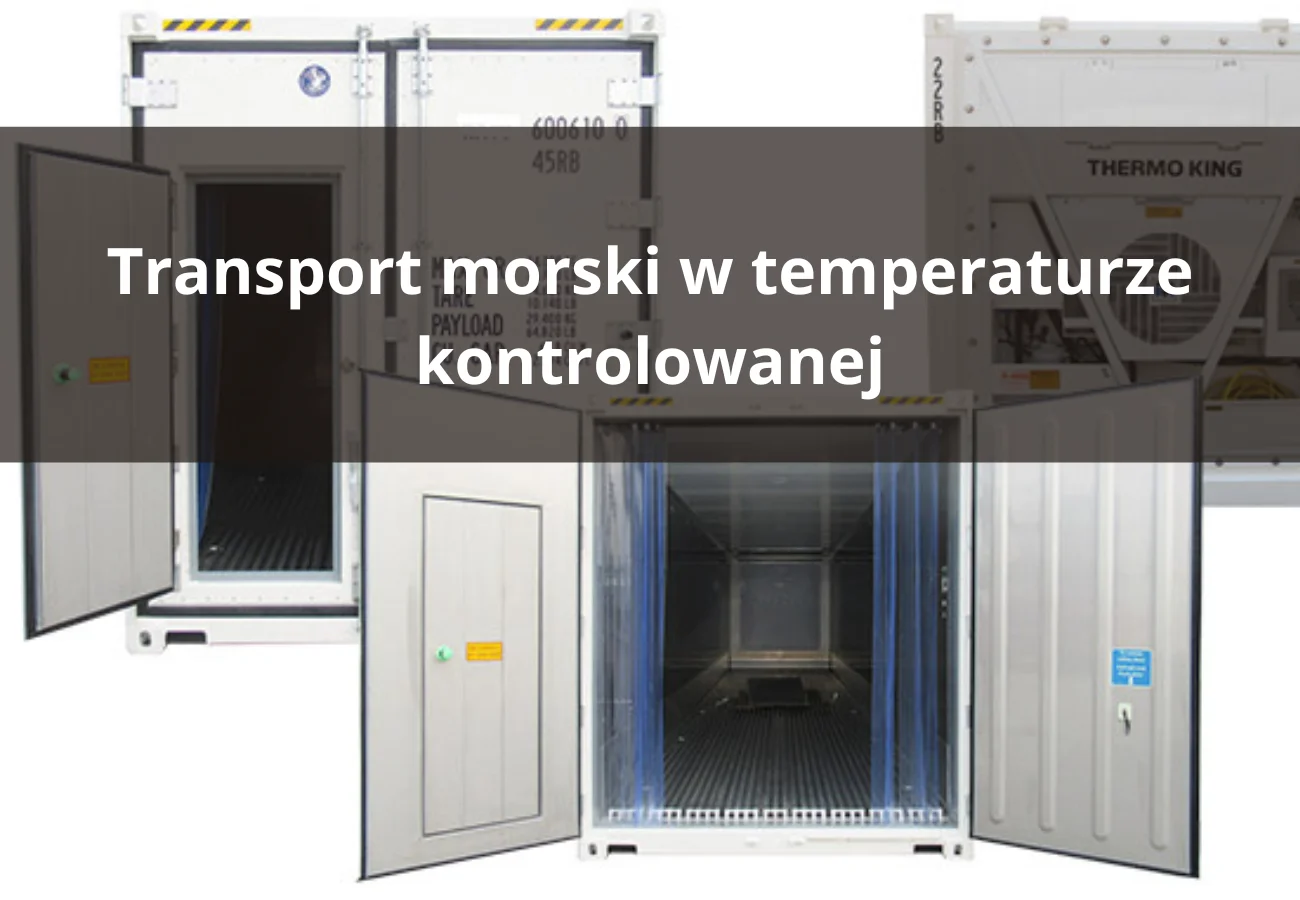Maritime transport temperature-controlled is a key element of the global supply network, enabling the safe transport of cargo requiring special temperature conditions. We say here mainly about the transport of pharmaceuticals, fruit and vegetables, meat and fish and many other products that require a controlled temperature.
1. principles of temperature-controlled maritime transport
While maritime transport is one of the most efficient ways of transporting goods on a large scale, it requires special attention when it comes to transporting temperature-controlled products.
Maintaining the right temperature is crucial to maintaining the quality and safety of products such as food, medicines or chemicals. Therefore, the rules for temperature-controlled sea transport are strictly defined and must be followed by all participants in the process.
The basic element in this process are specialised refrigerated containers that are able to maintain a constant temperature, regardless of external conditions. These containers are equipped with temperature monitoring systems that allow continuous monitoring and possible correction.
Transport is possible in a container:
20 RF - 10 Euro pallets can fit inside
40 RF - 23 Euro pallets can fit inside
It is worth noting that the refrigerated semi-trailer can accommodate 33 Euro pallets, for example, when transporting the entire semi-trailer to the port, it will be necessary to reload it into refrigerated containers. In this case, the entire semi-trailer will be reloaded into one 40 RF container and another 20 RF.
Key issues in cargo security:
Temperature at which the goods are to be transported
(-18) - (-20) degrees celsius - deep-frozen products such as meat, fish, etc.
The temperature will vary depending on the type of goods
Air circulation in the container
The goods in the container must be loaded in the right way to allow adequate ventilation on the load. In the event of poor loading or handling, there is a possibility of damage to the cooling system and therefore a risk of spoilage of the goods during transport.
Moisture content of products
-an important factor in the transport of fresh fruit
There is the possibility of installing a data logger, a special device that allows the humidity and temperature in the container to be viewed live online, in the container at loading.
Product packaging
Goods are usually transported on industrial pallets or EURO pallets.
2. Types of cargo requiring controlled temperature during sea transport
Fresh food products such as fruit, vegetables, meat and fish are just some of the loads that require temperature-controlled during sea transport. With the right temperature conditions, the quality of these products is maintained at the highest level, which is crucial for customer satisfaction and maintaining industry standards. Additionally, temperature control is essential for the carriage of certain pharmaceutical and chemical products, which can be damaged or lose their properties due to extreme temperatures.
Other loads that require controlled temperatures include. flowers and plants. These delicate products require special attention during transport to ensure their freshness and quality. Temperature control is also crucial for the carriage of certain types of electronics and technological equipment, which can be damaged by extreme temperatures.
Finally, it is worth noting that temperature control is also essential for the carriage of certain industrial productssuch as paints, adhesives or resins. These materials can deteriorate or lose their properties if they are not stored and transported under appropriate temperature conditions.
List of products that muss:
- Fresh food products
- Pharmaceutical and chemical products
- Flowers and plants
- Electronics and technological equipment - only applies to certain equipment
- Industrial products
3. temperature-controlled maritime transport technologies
Modern technology plays a key role in temperature-controlled maritime transport. The use of advanced refrigeration and monitoring systems allows a constant temperature to be maintained, which is essential for transporting many types of cargo such as food, medicines or chemicals. Pros of such a solution is, first and foremost, to increase the safety and quality of the products being transported, as well as the possibility of transporting over longer distances. On the other hand, disadvantages is higher operating costs and the need for constant monitoring of transport conditions. Nevertheless, advances in technology and increasing market demands are making temperature-controlled sea transport increasingly popular.
4. Challenges and problems associated with temperature-controlled maritime transport
In the context of temperature-controlled maritime transport, there are a number of challenges and problems that need to be solved. First of all, maintaining a constant temperature throughout the transport process is extremely difficult. Variable weather conditions, differences in temperature between loading and unloading ports, and long-term storage can all affect temperature stability. Therefore, advanced temperature monitoring and control systems that can effectively manage these problems are required.
A significant rise or fall in temperature in any part of the supply chain can spell disaster for the goods being transported. In addition, a broken link in the temperature chain can adversely affect products particularly food consumed by humans.
The second major challenge is to organise the entire logistics process so that a constant temperature is maintained throughout the journey. Maritime transport usually takes several weeks and this is quite a long period during which the transported cargo has to be kept at the right temperature.
It is also worth paying attention to the documents required for transport, so that no additional costs are incurred at any stage. For example, we are transporting fruit that requires specific documents at the destination. The absence of a particular document can hold up our cargo and generate very high costs. For this reason, it is best to organise this type of transport with a company that has experience in this.
5. maritime versus temperature-controlled air transport
A few years ago, sea transport was not popular as a viable option for goods with a short shelf life that required controlled temperatures during transit. Rather, the choice was air transportbecause, in the event of delays, planes could be quickly rerouted within a day or even a few hours.
Delivering temperature-controlled pharmaceuticals by flight was also less risky for modern bioproducts and gene therapies, especially in crisis situations such as the COVID-19 pandemic, when there was a risk of vaccines becoming out-of-date.
Nevertheless, the costs associated with air transport far exceeded those associated with sea transport. This meant that the overall cost per product could be many times higher, which was unacceptable to end users.
Thanks to technological advances and the development of high-performance refrigerated containers adapted for sea transport, the safe transport of temperature-sensitive products has now also become possible by sea.
6. The future of temperature-controlled maritime transport
It is anticipated that the future of temperature-controlled maritime transport will become even more technologically advanced. The development of IoT and AI technologies will contribute to even better monitoring and control of cargo temperatures. As a result, it will be possible to maintain ideal conditions for the products being transported, minimising the risk of spoilage. Process automation related to temperature control will save time and resources, resulting in more efficient and profitable shipping. Ecological solutions such as the use of renewable energy to power temperature control systems, will be increasingly used, contributing to the sustainability of the sector.






